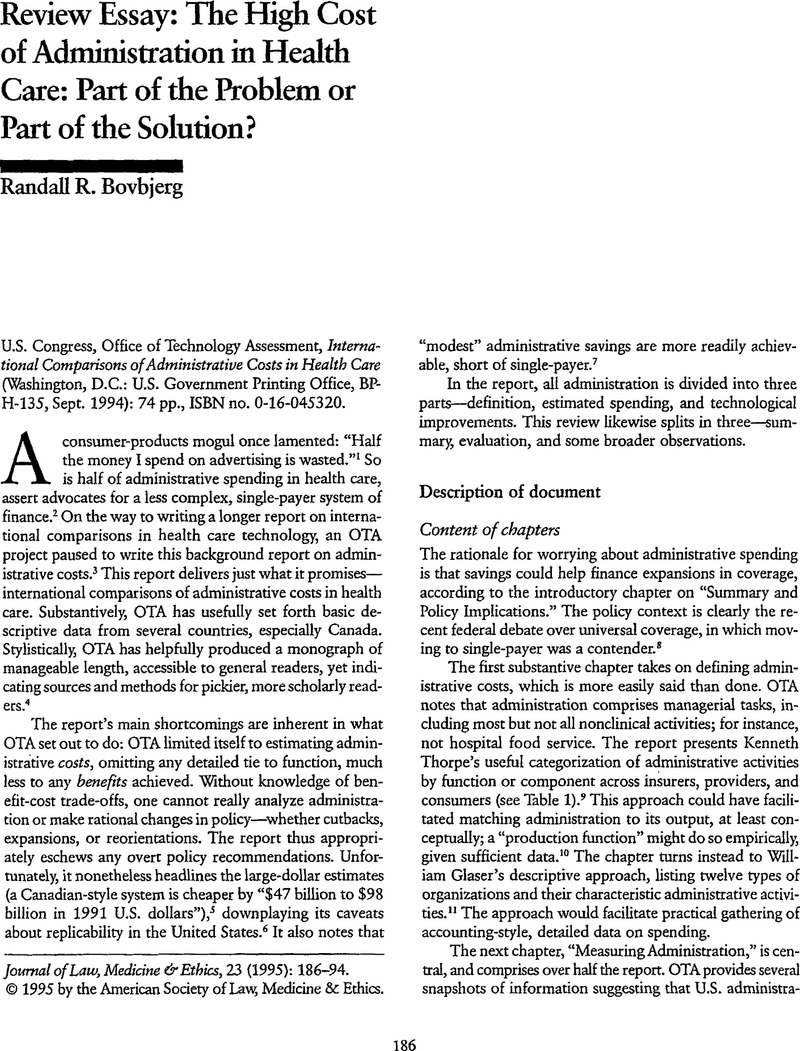For example, OTA emphasizes Sheils and Young's unpublished estimate (
supra note 16) that a $47 billion administrative savings would result from changing to single payer in the United States (see
OTA,
supra note 5, at 37, tbl. 3-2), but omits their more consequential estimate, that total spending would actually
increase by nearly $30 billion, because added utilization would more than offset reduced administrative spending (see
Sheils, ,
Young, , and
Rubin, ,
supra note 30, at 17). OTA merely drops a footnote in the summary to assert that the issue of increased utilization is “a complex issue beyond the scope of this paper” (see
OTA,
supra note 5, at 4, n.1). I think Sheils et al. are probably wrong; surely utilization would initially rise—which is a major reason for favoring universal coverage—but single payer comes with its own mechanisms for controlling spending, especially growth over time. OTA should have recognized and discussed this point, at least giving arguments for and against, not just swept it under the rug.
Google Scholar